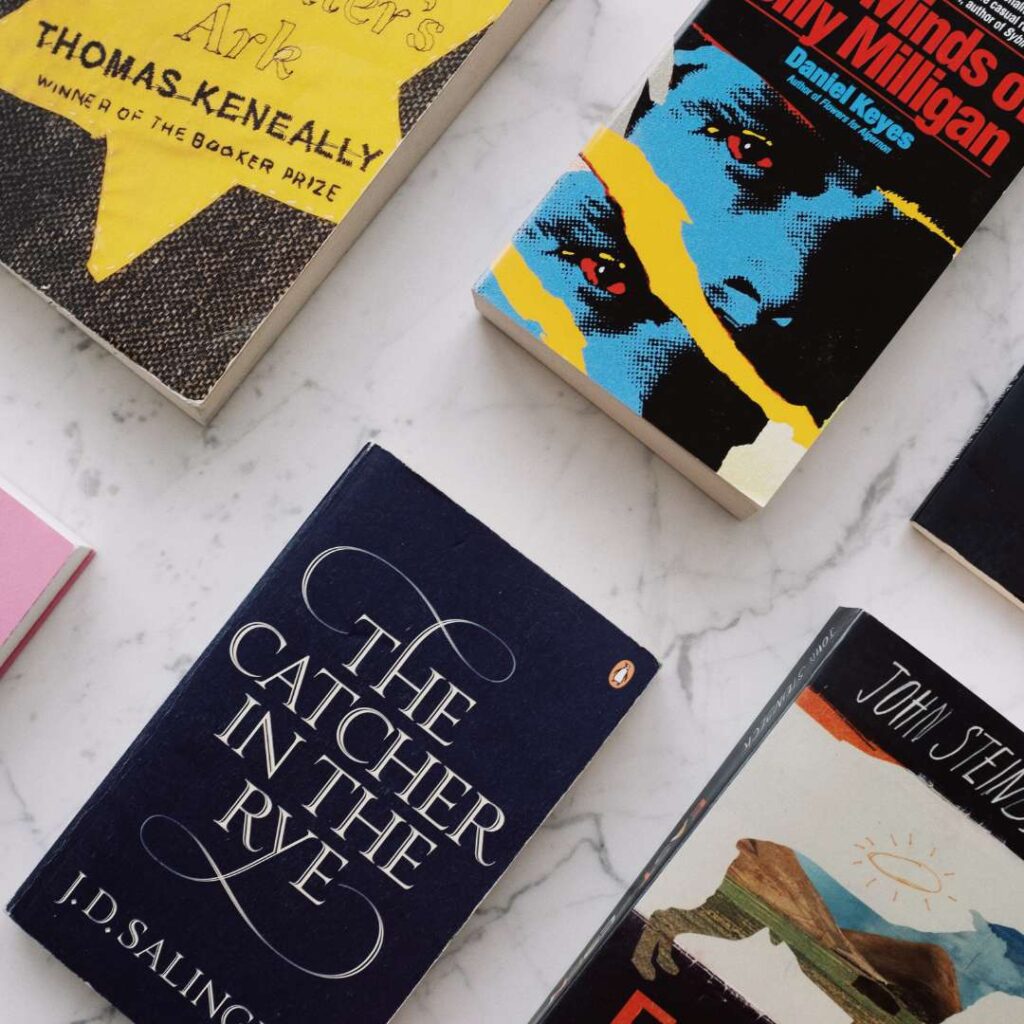Table of Contents
- Introduction
- Covers as Digital Interfaces: More Than Just a Pretty Face
- AI in Cover Design: From Concept Tool to Creative Collaborator
- Augmented Reality and Smart Covers: Making Print Interactive
- Eco-Conscious and Sensory Design: Covers You Can Feel (and Trust)
- The Cover as a Cultural Signal in the Algorithm Age
- Conclusion
Introduction
The book cover, once a purely functional element meant to shield a work’s pages from wear and tear, has transformed over centuries into one of the most important tools in publishing. It’s no longer just an artistic expression or a protective layer—it’s a marketing asset, a discovery signal, a cultural product, and, increasingly, a piece of dynamic media. But in a world where books are browsed as thumbnails, sold in digital storefronts, and often consumed without ever seeing a physical page, what does the future of the book cover look like?
The rise of AI, augmented reality, smart materials, digital interfaces, and eco-conscious design is all reshaping what a book cover can be and how it functions in the reader’s journey. And let’s be honest—this transformation isn’t optional. Publishers must adapt or risk invisibility in a marketplace where attention is scarce, competition is intense, and algorithms dictate discoverability.
This article explores the future of book covers and how design evolves in response to digital behaviors, technological tools, reader expectations, and environmental shifts. Whether you’re a traditional publisher, academic press, indie author, or design enthusiast, the insights here will help you see the book cover not as a static rectangle but as a strategic platform that lives, moves, and speaks.
Covers as Digital Interfaces: More Than Just a Pretty Face
The digital transformation of reading has turned the book cover into something entirely new. No longer bound by print limitations, covers in digital formats can move, change, and even interact with the reader. This is particularly relevant in the world of ebooks, where the static, two-dimensional cover often appears only as a brief thumbnail on a shopping page or inside a reading app. As digital reading environments become richer and more personalized, it’s not far-fetched to imagine a near-future where book covers are built like mini web interfaces rather than flat images.
For example, a cover could include subtle motion graphics—a flickering flame, a floating feather, a shimmer of rain—that sets the mood even before the first page is turned. More ambitiously, interactive covers may respond to user behaviors or preferences. A mystery novel could feature a different color scheme based on the time of day, or a textbook could adapt its layout depending on whether the reader is a student or a teacher. These changes could be powered by metadata, geolocation, user profiles, or simply reader settings. This evolution pushes cover design into the realm of experience design, where storytelling begins before the first sentence.
This shift demands a new skill set from publishers and designers. Covers must be designed with code in mind. EPUB3, HTML5, and CSS become part of the creative toolkit. While print covers will continue to exist and matter, the digital-first mindset is quickly becoming standard. Those who understand that a digital cover isn’t just a JPEG, but potentially an adaptive interface, will set themselves apart in the crowded landscape of online book marketplaces.
AI in Cover Design: From Concept Tool to Creative Collaborator
Artificial intelligence is no longer a novelty in the publishing industry—it’s an active collaborator. While the conversation around AI has mostly centered on its ability to generate content, design is quietly undergoing its own revolution. AI tools like Midjourney, Adobe Firefly, and DALL·E can now produce stunning book cover concepts in seconds, allowing publishers and authors to explore dozens of styles and visual directions before settling on a final version.
This acceleration of the design process is a boon, especially for small presses, self-publishing authors, and university publishers with limited budgets. Where once the cost of custom illustration or high-end design could be prohibitive, AI can now provide a low-cost starting point or inspiration board. Yet, the use of AI in book cover design isn’t without complications. While it enables speed and iteration, it also raises questions about authenticity, copyright, and artistic integrity. The flood of AI-generated covers risks creating a new visual monoculture, where every book starts to look vaguely familiar, slick, but soulless.
That’s why the best publishers will use AI not as a replacement, but as a creative ally. Imagine using AI to brainstorm visual metaphors or prototype twenty concept variations before handing the final direction to a human designer. AI excels at volume and possibility; humans excel at nuance, narrative, and cultural sensitivity. The fusion of both opens up exciting possibilities for the future of cover design, where efficiency and artistry are not mutually exclusive.
Augmented Reality and Smart Covers: Making Print Interactive
Despite the digital wave, print is far from obsolete—and ironically, technology is helping revive interest in physical books. One of the most intriguing developments is integrating augmented reality (AR) and smart tech into print book covers. Readers can now scan a cover with their smartphones and unlock an immersive experience: animated trailers, narrated excerpts, interactive maps, behind-the-scenes videos, or even gamified quizzes. This convergence of print and digital is not a gimmick. It’s a powerful engagement strategy, especially in genres like children’s books, fantasy, and education.
For academic publishers, the implications are even more compelling. Imagine a law textbook with an AR-enabled cover that launches short video explainers or links to court case databases. Or a scientific monograph that reveals 3D models of molecules or ecosystems through an app. These experiences don’t just add value—they extend the book into a learning ecosystem. AR-powered covers become portals rather than products.
Moreover, innovations like NFC (Near Field Communication) chips and QR-based interactivity allow for even more versatility. Limited editions could contain unique content accessible only through the printed cover. Book clubs could link directly to discussion forums. Authors could embed voice notes or exclusive digital art. The barrier here isn’t the technology—it’s the publisher’s imagination.
The challenge, of course, is cost and scale. Not every book needs or justifies an AR experience. But in certain categories—premium nonfiction, collector’s editions, educational texts—the ROI can be substantial. Publishers willing to experiment with hybrid formats will stand out on shelves and redefine what it means to “read” a book.
Eco-Conscious and Sensory Design: Covers You Can Feel (and Trust)
The rise of environmental awareness is pushing publishers to rethink every material decision, and book covers are squarely in the spotlight. From lamination to ink to adhesives, every element now carries ethical and ecological weight. Forward-thinking publishers are already experimenting with biodegradable covers, recycled paper stocks, and vegetable-based inks. But the future goes even further, toward sensory and sustainable design that doesn’t compromise on beauty.

One area of exciting growth is tactile storytelling. Think of covers that use embossed textures, rough natural fibers, or heat-reactive inks. These sensory choices are not merely aesthetic—they tell a story before the first page is turned. A novel set in the desert might use grainy textures; a historical biography could mimic parchment or leather. Sensory engagement deepens the emotional connection between the reader and the book, making the physical object feel like an extension of the narrative.
Another trend gaining traction is the use of smart materials. Some designers explore covers that change appearance with temperature, light, or motion. Imagine a mystery novel whose title vanishes under warm fingers, or a climate-themed book that shifts colors in sunlight. These effects are still niche and often costly, but they show the creative range that physical design can still offer.
Ultimately, as the market grows more conscious, eco-friendly production won’t just be a nice-to-have but a competitive advantage. Publishers that align their material choices with environmental values will find new audiences who see sustainability as part of the story they want to support.
The Cover as a Cultural Signal in the Algorithm Age
The book cover plays a new role in a digital economy dominated by algorithms: it must signal value in milliseconds. Whether viewed as a thumbnail in a web store, a social media recommendation, or a carousel ad on Goodreads, the modern cover has to “stop the scroll.” And while this may sound like a superficial challenge, it demands deeper cultural fluency and strategic thinking than ever before.
Gone are the days when a cover had to work only on a bookstore shelf. Today, it must function across platforms, devices, and formats—all while staying true to the book’s tone and purpose. This has created a new design pressure: covers must be bold but not brash, legible in tiny sizes, visually unique but algorithmically friendly. Type choices matter more. Color palettes matter more. Aspect ratios and whitespace matter more. A blurry or poorly cropped thumbnail can be a death sentence in an online marketplace.
But the deeper truth is this: covers now act as cultural shorthands. A reader skimming through Amazon or StoryGraph makes subconscious decisions based on visual cues they’ve internalized from genre conventions, brand aesthetics, and social trends. A dystopian thriller may lean on dark palettes and angular fonts; a self-help title may radiate warmth and clarity. Deviating too far from expectations can confuse the reader. Yet being too predictable invites invisibility. This is the tightrope publishers must walk.
Moreover, covers can’t be one-size-fits-all anymore. A book might need multiple covers for different platforms, regions, or audiences. A U.S. cover for an academic text might emphasize clarity and prestige; a Southeast Asian version might need visual elements that resonate with local cultures. This multiplies the workload and the opportunity to reach readers where they are, with visuals that speak their language.
Conclusion
The future of book covers is rich, hybrid, and full of contradictions. As publishing becomes more global, digital, and dynamic, the humble book cover evolves into something far more strategic. It’s no longer just a visual treat or packaging mechanism. It’s a cultural interface, a discovery tool, a value signal, and in many cases, an experience.
For publishers, this future demands new thinking. Designers must embrace code and motion. Marketers must understand metadata and discoverability. Production teams must weigh environmental costs alongside aesthetics. And all of us—authors, editors, readers—must expand our definition of a book cover.
But amid all the change, one thing remains true: the book cover is still the reader’s first impression. In a world of infinite choice, it’s the one chance to say, “This is worth your time.”
The next decade of cover design will be marked by bold experimentation, deeper collaboration between humans and machines, and a renewed appreciation for the power of visual storytelling. The future of the book cover isn’t just about looking good. It’s about being alive to the ways readers discover, interact with, and fall in love with books.
